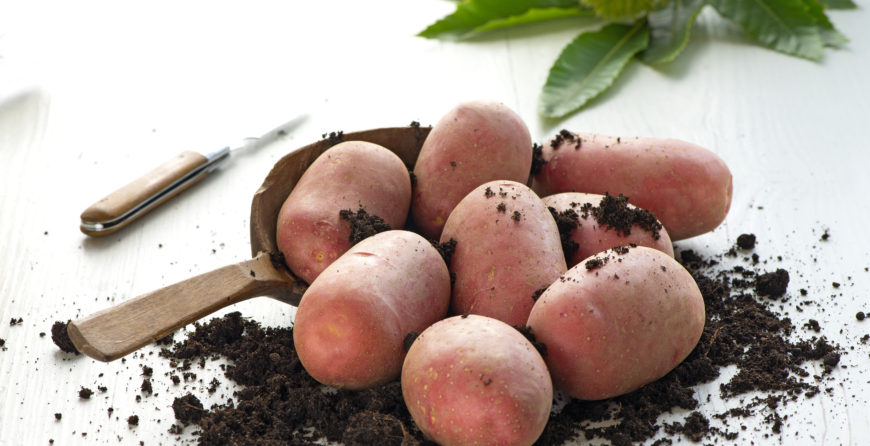The production of seed potatoes from varieties that produce large tubers (Bellarosa, Jelly, Agria, etc.) may encounter difficulties due to the small percentage of standard size tubers. Therefore, measures are needed to increase the number of tubers.
In general, the number of tubers is closely associated with the number of stems; as a result, all measures taken to increase the number of stems will also lead to an increase in the number of tubers (per hectare), which will increase the productivity of standard-sized potatoes. In any case, the density of the stems cannot be increased for biological (..) or economic reasons (seed demand).
- Increasing the number of strains
• At planting:
The simplest methods are planting more seed potatoes, planting larger tubers (large seed produces more stems) and the combination of the two. Using more seed potatoes of smaller size (28 – 35 mm) may be an optimal measure, but this should only be considered if the seed is of very good quality (small seed may be less productive than the standard size) .
• Degenerate seed:
The number of stems also depends on the age of the seed; the young seed produces fewer stems than the degenerate one. The use of the latter is very suitable to increase production (Caution! Highly degenerated seed cannot be used; it sprouts, is not productive and, in the worst case, does not allow the plant to grow).
The degree of seed degeneration can be accelerated by:
- Early desiccation of seeds (sufficient maturation and starch content must be taken into account);
- Slight increase in storage temperature (5 degrees instead of 3-4);
- Thermal shock control. Storage at 2-3 degrees for 10-14 days (requires cooler) and subsequent storage at approx. 18 degrees lead to the reduction of storage properties (this method involves technical equipment and careful training of staff);
- Removing the apical prominence of the seed by breaking the first corner (apical). After that, the tubers will sprout from several eyes. Warning: breaking the fangs can cause susceptibility to pathogenic infections caused by fungi and bacteria! This measure can only be applied before planting healthy tubers and their drying must be ensured to prevent phytosanitary problems;
- Prolonged cold storage (3 – 25 weeks at 4 degrees) can also solve the problem of apical protrusions. It can be applied to late maturing varieties such as Jelly;
- Late planting: increases the degree of seed degeneration.
- Accelerate the formation of tubers and prevent the reduction of the number of tubers already formed
The formation of tubers can be accelerated, in particular, by uniformizing the amount of water and nutrients administered. Supplementing quantities can accelerate the formation of tubers in poorer soils, but – in the case of soil with a lot of phosphorus – phosphorus supplementation will not be effective. Instead, 1-2 fertilizer applications with nitrogen and phosphorus (eg Wuxal) can be made. The application should be done during the formation of tubers (at the beginning of flowering or shortly before it), to prevent the reduction of the number of tubers already formed. The recommended dose is approx. 5 – 7 l / ha per application.
If possible, irrigation during tuber formation helps prevent a reduction in the number of tubers already formed (in addition to reducing the risk of common scabies).


 Individual approach
Each application is studied individually and we come with special offers according to the specified requirements.
Individual approach
Each application is studied individually and we come with special offers according to the specified requirements.